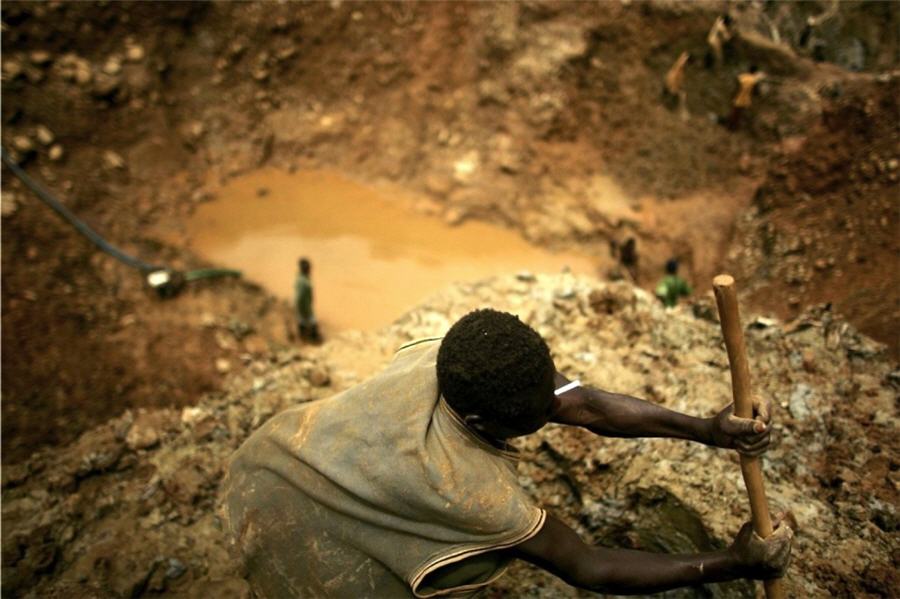Congo’s cobalt hopes risk the same ruinous road as Thai rice: Russell

LAUNCESTON, Australia, Feb 19 (Reuters) – What do the moves by the Democratic Republic of the Congo (DRC) to boost its share of the country’s cobalt bounty have in common with the former Thai government’s attempts to control the global market for rice exports?
Both are examples of dominant producers of a commodity trying to extract more wealth from that position.
It’s also likely that similar to the ultimate disaster that befell ousted Thai prime minister Yingluck Shinawatra, the DRC’s attempts to extract more from cobalt will unleash a wave of unintended consequences, none of which will be positive for the government in Kinshasa.
Cobalt has gone from a minor metal with an almost non-existent public profile to the major threat to the future of the switch to electric vehicles and battery storage for electricity.
This is because cobalt is a key ingredient in the current technology lithium-ion batteries essential for both cars and electricity storage, and the DRC produces more than half of the world’s supply.
The DRC is hardly a paragon of stable government, with President Joseph Kabila still refusing to hold elections even though his term expired two years ago.
Much of the country remains beyond the control of the central government and its recent history has seen numerous conflicts that involved several neighbouring countries and various armed factions.
However, Kabila’s government has made it clear that it now wants a greater share of the revenue from its vast reserves of cobalt, with the country producing 73,940 tonnes of the metal last year, a jump of 15.5 percent from 2016.
Parliament has approved a new mining code that increases royalties five-fold to 10 percent, and removes a stability clause in the current law that protects miners from changes to the fiscal and customs regime for 10 years.
The code still has to be signed into law by Kabila, and miners active in the country, including Glencore and Ivanhoe Mines, are lobbying for changes and talks about future taxation arrangements.
The DRC’s state-owned miner Gecamines also wants to re-negotiate contracts with international partners to secure a bigger share of revenues.
The DRC situation occupied much of the recent Investing in African Mining Indaba conference in Cape Town, with miners in attendance privately expressing fears that the DRC would ultimately move down the road to full nationalisation of the industry.
Thai precedent
What does this have in common with Yingluck’s policy of subsidising Thai rice farmers, a policy she introduced to win the support of the rural population who helped her to election victory in July 2011?
Yingluck’s government saw what they thought was an opportunity to make global rice consumers pay more for the staple grain, which would allow them to pay generous subsidies to rural farmers.
At the time, Thailand was the world’s largest exporter of rice, with a market share above 50 percent, and there was real market concern not only of rising prices, but also of shortages, much like today with cobalt.
But what happened was that as soon as the new Thai government tried to raise export prices, the country became the supplier of last resort and buyers moved increasingly to competitors such as Vietnam and India.
Ultimately the Thai government spent billions of dollars buying rice it couldn’t sell, forcing it to stockpile millions of tonnes of the grain, leading to fiscal pressure and allegations of mismanagement that helped spur the military takeover that removed Yingluck in May 2014.
This isn’t suggesting that the DRC is heading toward a military coup, but there are similar dynamics starting to play out.
The first is that the hunt for cobalt outside the DRC is going to be massively stepped up, with the United States and Sweden among those countries that have already said they are targeting new deposits of the metal.
Secondly, huge amounts of capital are about to flow into finding alternatives to using cobalt in batteries, or at least reducing the amount of cobalt used for each unit.
Thirdly, the DRC is likely to suffer an investment boycott if it goes ahead and implements terms that punish the mining companies that have taken a risk and put their money into developing the central African nation’s resources.
Numerous commentators have pointed out that there is still a cobalt supply crunch on the horizon, as new mines, improved battery technologies and extensive recycling of used batteries is likely to still leave a shortfall of cobalt, assuming the forecasts for electric cars and power-storage batteries are accurate.
This may be the case, but past experience has shown that when the price signal is strong enough, the response tends to happen far more quickly than anticipated.
Right now, the price signal is flashing red, with London cobalt futures ending at $81,500 a tonne on Feb. 16, up 8.3 percent so far this year, but also up an astonishing 275 percent since the low of $21,750 from February, 2016.
The DRC is in pole position to benefit from the expected surge in demand for cobalt, but only if it decides to pursue polices that don’t alienate mining companies and encourage the rapid development of alternatives.
(Written by Clyde Russell; Editing by Joseph Radford)
More News
Ace Green, OM Commodities sign lead scrap supply deal for Texas recycling facility
April 30, 2025 | 02:03 pm
{{ commodity.name }}
{{ post.title }}
{{ post.date }}


Comments